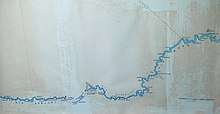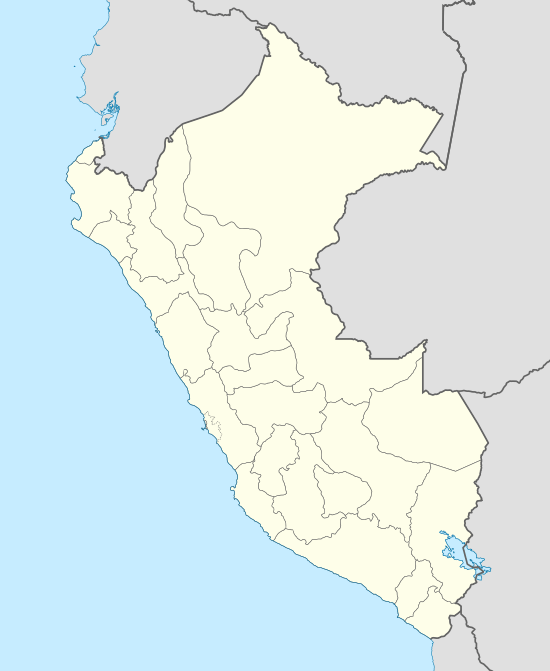Isthmus of Fitzcarrald
The Fitzcarrald Isthmus is a 11 km long land bridge that connected important rubber trade routes of the Urubamba river and the Madre de Dios river in Peru.
| Isthmus of Fitzcarrald | |
|---|---|
| Native name Istmo de Fitzcarral | |
 | |
| Location | Carlos Fermin Fitzcarrald Province, Peru |
| Coordinates | 11°44′59.9″S 72°24′14.0″W |
| Type | Isthmus |
 Location of Isthmus of Fitzcarrald in Peru | |
Carlos Fermin Fitzcarrald discovered the land bridge in 1893[1] after repeated attempts to unite trade in the North and South of the Amazon basin during the Amazon rubber boom. Based on suggestions of local indigenous rubber workers who were familiar with the area, he began an initial exploration, and subsequent clearing of the Ishtmus for trade. The isthmus is located between two small river arms, which are in turn tributaries of major river systems: the Serjhali river (a tributary of the Mishagua river, tributary of the Urumbamba river, itself tributary to the Amazon river) and the Caspajhali river (a tributary of the Manu river, itself a tributary of the Madre de Dios river).
Fitzcarrald decided to disassemble his steam boat "Contamana" and have it be carried across the Isthmus - a publicity stunt that proved the Isthmus a workable cargo route for rubber transport, and served nearly a century later as the visual inspiration for Werner Herzog's film Fitzcarraldo.[2]
The land bridge has a slow upwards slope and features one 500m hill with a 74% gradient in its middle; mules were used to carry cargo across that inconvenient dirt road (a "trocha" in Spanish).[3]

While others used and further mapped out the Isthmus, Fitzcarrald died 4 years after he had discovered it; the rubber boom ended less than a decade later after the biotheft of Henry Wickham led to the complete collapse of the South American rubber economy. With rubber no longer needing to be shipped, the isthmus route grew over again and is invisible on satellite images in 2019 - only the two rivers remain visually.[4]
See also
References
- Ayapua Boat Museum in Iquitos, Fitzcarraldo exhibition. https://casamorey.com/boat-museum/
- "Learning from Fitzcarraldo". V2_Institute for the Unstable Media. Retrieved 2019-07-25.
- Baluarte, Rafael E. (1904-01-01), English: The Fitzcarrald Ishtmus (Istmo Fitzcarral a.k.a. Istmo Fitz-Carrall) as mapped in 1904 by Rafael E. Baluarte. The Ishtmus, discovered by Carlos Fermin Fitzcarrald, is a land bridge that is the shortest connection between the Serhali river (a tributary of the Urubamba and Amazon rivers) as well as the Caspajhali river, a tributary of the Madre de Dios river., retrieved 2019-07-25
- "Google Maps". Google Maps. Retrieved 2019-07-25.